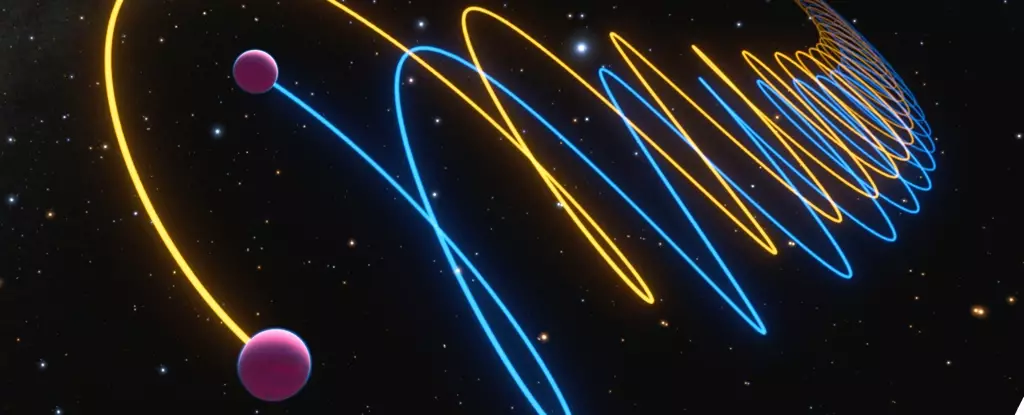In the realm of astronomical marvels, few discoveries capture the imagination quite like brown dwarfs. These intriguing celestial bodies exist in a unique space between gas giants and stars, providing crucial insights into cosmic evolution. In 1995, a team of researchers from Caltech at the Palomar Observatory stumbled upon one such instance: Gliese 229 B, a brown dwarf orbiting the red dwarf star Gliese 229, located a mere 19 light-years away from our planet. The initial observations indicated that Gliese 229 B exhibited perplexingly dim characteristics for an object with a mass estimated to be around 70 times that of Jupiter, turning heads and raising eyebrows across the world of astronomy.
The Longstanding Mystery
For nearly three decades, Gliese 229 B has publicly puzzled astronomers. Observations consistently revealed its dimness, leading scientists to question the accuracy of their mass estimations. Brown dwarfs, akin to failed stars, should be significantly brighter, especially when their mass is taken into account. Despite suspicions that Gliese 229 B could potentially be a binary system—consisting of two closely orbiting brown dwarfs—these theories remained largely speculative due to the challenges in observing such proximity.
A pivotal moment in this ongoing saga came as a Caltech-led team turned its attention back to Gliese 229 B’s peculiar characteristics. Utilizing cutting-edge technologies, they embarked on a quest to decipher the long-standing dilemma surrounding its luminosity.
The breakthrough came through a collaborative effort, spearheaded by graduate student Jerry W. Xuan and Dimitri Mawet, the David Morrisroe Professor of Astronomy at Caltech. Their international team, composed of experts from numerous esteemed institutions, capitalized on advanced observational tools such as the GRAVITY interferometer at the European Southern Observatory’s Very Large Telescope in Chile. This innovative equipment allowed for high-resolution imaging, enabling the team to spatially resolve Gliese 229 B and unveil its dual nature.
Adopting spectroscopic techniques, particularly through the CRyogenic high-resolution InfraRed Echelle Spectrograph (CRIRES+), researchers discerned distinct spectral signatures and measured the Doppler shifts of the two entities. The groundbreaking results confirmed that Gliese 229 B is not a singular entity but a binary system consisting of Gliese 229 Ba and Gliese 229 Bb, each with 38 and 34 times the mass of Jupiter, respectively. This striking revelation aligned the observed brightness levels with the expectations for two small brown dwarfs of this mass range, resolutely solving the 30-year-old mystery.
The implications of these findings extend beyond mere clarification. By categorizing Gliese 229 B as a binary system, astronomers can enhance their understanding of the formation and evolution of brown dwarfs, which lie at a curious intersection between stars and planets. According to Mawet, this discovery not only addresses the long-standing discrepancies between the mass and luminosity of Gliese 229 B but opens new avenues of inquiry regarding how such close-knit brown dwarf systems emerge.
One prevailing theory suggests that these binaries could form from the fragmentation of a star’s protoplanetary disk, leading to gravitational binding after a close encounter. Such revelations invite further investigation into the nature of brown dwarfs and their formation mechanisms, hinting at the possibility of uncovering similar binary systems in the cosmos.
Excitement within the scientific community is palpable as researchers eye the future. Xuan and his colleagues are gearing up for an expansive search for additional brown dwarf binaries using both current and next-generation instruments, including the Keck Planet Imager and Characterizer (KPIC) and the Keck Observatory’s High-resolution Infrared Spectrograph for Exoplanet Characterization (HISPEC). As the observational capabilities advance, so too does the hope of unlocking further secrets held by these enigmatic celestial bodies.
In a separate yet related study published in The Astrophysical Journal Letters, findings from another team of researchers echoed the conclusions drawn by Xuan and Mawet, reaffirming the nature of Gliese 229 B as a binary system. As more data accumulates and technology progresses, the understanding of substellar objects continues to evolve, taking us deeper into the narratives woven into the fabric of our universe.
The discovery of Gliese 229 B as a binary star represents more than just an academic milestone. It serves as a reminder of the many mysteries still lurking in the cosmos and the innovative spirit that drives scientific inquiry. As researchers dissect the findings and explore the implications, it’s evident that the journey into the realm of brown dwarfs is far from over. For astronomers, the revelation provides a launching pad for future studies, sparking curiosity and inspiring the next generation of exploration—a testament to the dynamic and ever-evolving quest for knowledge in the universe.


Leave a Reply